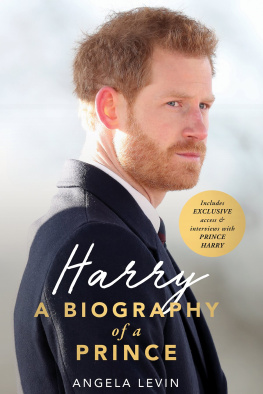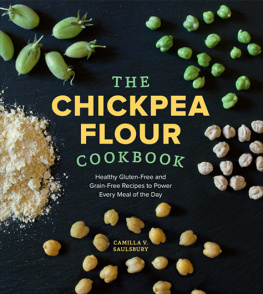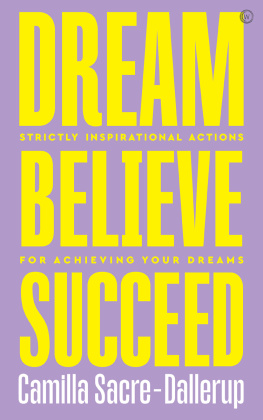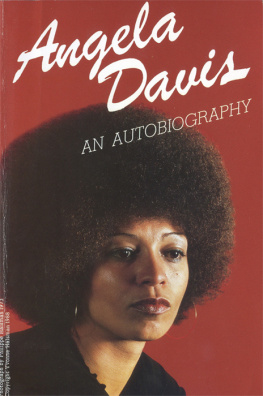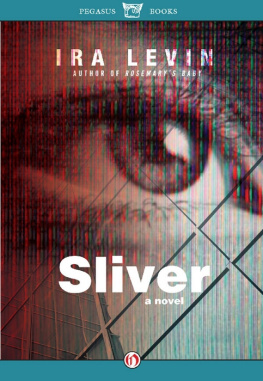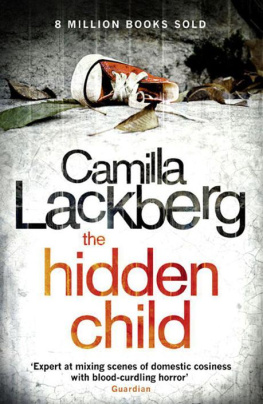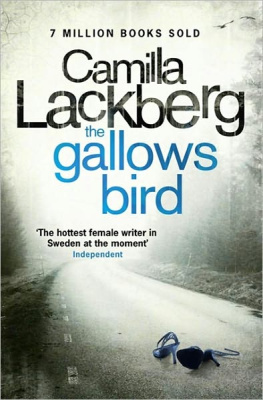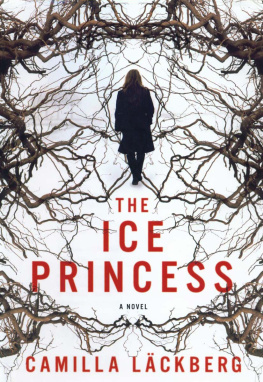Angela Levin - Camilla
Here you can read online Angela Levin - Camilla full text of the book (entire story) in english for free. Download pdf and epub, get meaning, cover and reviews about this ebook. year: 2022, publisher: Simon & Schuster UK, genre: Non-fiction. Description of the work, (preface) as well as reviews are available. Best literature library LitArk.com created for fans of good reading and offers a wide selection of genres:
Romance novel
Science fiction
Adventure
Detective
Science
History
Home and family
Prose
Art
Politics
Computer
Non-fiction
Religion
Business
Children
Humor
Choose a favorite category and find really read worthwhile books. Enjoy immersion in the world of imagination, feel the emotions of the characters or learn something new for yourself, make an fascinating discovery.

- Book:Camilla
- Author:
- Publisher:Simon & Schuster UK
- Genre:
- Year:2022
- Rating:3 / 5
- Favourites:Add to favourites
- Your mark:
- 60
- 1
- 2
- 3
- 4
- 5
Camilla: summary, description and annotation
We offer to read an annotation, description, summary or preface (depends on what the author of the book "Camilla" wrote himself). If you haven't found the necessary information about the book — write in the comments, we will try to find it.
Camilla — read online for free the complete book (whole text) full work
Below is the text of the book, divided by pages. System saving the place of the last page read, allows you to conveniently read the book "Camilla" online for free, without having to search again every time where you left off. Put a bookmark, and you can go to the page where you finished reading at any time.
Font size:
Interval:
Bookmark:
The more time I spent researching and writing about the Duchess of Cornwall, the more remarkable she seemed. Like most people, her journey through life had its ups and downs, but few would have experienced the extreme highs and lows that have brought her to where she is today. When they first met, Prince Charles recognised how compatible the two of them were, but the timing wasnt appropriate. Many aspects of her character lay dormant but sprang into life once they were married, and ever since she has given a great deal to the monarchy and the country.
Writing her story has been a privilege and totally absorbing. My plan was to provide a rounded portrait and I am very grateful to her friends, former members of her staff, heads of charities of which she is patron, and the many other individuals who know her well and who generously gave up their time to talk to me. Id like to thank in particular Clare Balding, Gavin Barker, Professor Vernon Bogdanor, Mark Bolland, Gyles Brandreth, Dame Darcy Bussell, Joy Camm, Lord Carey of Clifton, Dame Judi Dench, Jonathan Douglas, Ruth Ganesh, Catherine Goodman, Robert Hardman, Ainsley Harriot, Dame Susan Hill, Claire Horton, Suzanne Jacob, Ian Jones, Jude Kelly, Laura Lee, Amanda MacManus, Bruce Oldfield, Dame Esther Rantzen, Craig Revel Horwood, Luke Rittner, Andrew Roberts, Lucia Santa Cruz, Peter Stewart and David Yelland. None of whom asked to be off the record. Others gave me their thoughts but preferred to do so anonymously. Id also like to thank members of staff at Clarence House, who were very helpful, and in particular the Duchess of Cornwall for letting me join her on engagements.
Simon and Schusters Ian Marshall, Deputy Publishing Director, Non-Fiction, Kaiya Shang, copy editor Kerri Sharp and my agent Barbara Levy must also be thanked.
Most important of all I want to show my gratitude to my husband, Robert Low, for his endless help and encouragement.
E ven the most diehard royalist would have to concede that the British monarchy has begun to look a bit wobbly over the past few years. It is surviving largely thanks to the personal popularity of Queen Elizabeth II, who celebrated a record-breaking seventy years on the throne on 6 February 2022. Despite the harm done to the institution by the disgrace of Prince Andrew and the self-exile and departure from the Royal Family of Prince Harry, the Queen has laid out the road ahead by naming her heir Prince Charless wife Camilla, Duchess of Cornwall, as the future queen consort, finally laying to rest the long debate as to whether she should receive that title or be merely known as princess consort.
Although Camillas name and face are recognised around the world, what she is really like as a person has remained shrouded in mystery. Having immersed myself in Camillas story, I see her as her own woman who is happy to learn from others but is comfortable in her own skin a quietly determined female with a hint of vulnerability who enthusiastically supports women but not to the detriment of men.
The Queen is renowned for her belief in the stiff upper lip and has rarely revealed her feelings in public, with the exception maybe of when one of her horses wins a race. She has also encouraged senior members of the family not to show any emotion when they are on duty, even if it involves their children or something distressing. Camilla is not like that. Depending on what the distress is about, she can sometimes wait until she is home, where she will cry alone. Yet if what she sees or hears is extremely distressing, she doesnt feel self-conscious crying in public.
As a young adult Camilla didnt yearn to make an impact on the world. Her expectation of life was to marry, have children, ride, read and spend time in the countryside. An easy-going optimist, she saw the best in people, was fun to be with and had lots of friends. She wasnt insecure or envious of others. Many of Camillas positive qualities have stayed with her during her mature years. At twenty-four she was the right woman for the then rather gauche 22-year-old Prince Charles, but the timing and mood of the country was wrong.
Their extraordinary love story began more than half a century ago when their mutual friend Lucia Santa Cruz acted as cupid as she was concerned about Camillas relationship with Andrew Parker Bowles, and instinctively felt she and Charles would get on. They did, but their relationship was unable to be sanctioned due to the protocol of the times. Yet it has endured the kind of pressure in the public eye that few of us can imagine, during which time they have managed to overcome the many stumbling blocks that have affected their lives. Camilla has been relentlessly accused of destroying Prince Charless first marriage to Lady Diana Spencer and she has had to cope with appalling verbal attacks. They have understandably left scars, but that in turn has helped her develop a protective skin. Camilla and Charless relationship was eventually sealed by their marriage in 2005. Mark Bolland, Prince Charless deputy private secretary in the 1990s, says of their closeness: There was never any sense that either of them had other people. It was just them.
The moment they were married, Camilla moved from being an outcast to becoming the second highest-ranking woman in the British order of precedence next to the Queen and is now on the verge of being queen consort to Charles when he becomes king. What a journey it has been. How has she survived?
Her close friend Catherine Goodman, the Founding Artistic Director of the Royal Drawing School, an independent charitable art school in Londons East End, is impressed with how she adapted to royal life in her mid-fifties. She is a countrywoman who was educated and cultured but nevertheless was an army wife and lived in Wiltshire. A lot goes with that. Her horses and dogs and a good walk can sort most things out for her. She wasnt somebody who was travelling the world or running to art fairs.
Gyles Brandreth, broadcaster and former MP, who has known Camilla since her school days, has a slightly different take. She never complains in public and is very self-contained. Her family is key to her, especially her sister [Annabel], her former husband [Andrew Parker Bowles] and her children [Tom and Laura]. Andrew is now a friend and joined in celebrating her seventieth birthday party. She hasnt changed a lot over the decades, but she has adapted very skilfully to the situation shes in and blossomed into the role. She seems to be the same person, just doing different things and surprising herself by doing much more.
He believes Prince Philip helped too. She has so much in common with the late Duke of Edinburgh and is never in competition with the Prince of Wales, just like the duke never was with the Queen. Instead, she is always Prince Charless ally, being supportive and completely discreet. Prince Philip was also Camillas role model, which is why she regards that it is her job to be one step behind Prince Charles when she is not on her own and be on show when she is on her own and not a support act. Nor does she stray into areas she knows nothing about. You dont find her talking about the environment or science. But she can talk endlessly about literacy.
Other people I spoke to think Queen Elizabeth the Queen Mother had more effect on her. The historian Andrew Roberts comments: I think there is a very strong element in Prince Charles that sees his wife as giving him the same kind of good counsel as his grandmother gave him. If you have somebody who gives you good counsel and who you know is always on your side in your life, you dont want to let them go. He could have let Camilla Parker Bowles go several times in the last century and he was under the most enormous pressure to do that. He also wanted to stay as heir to the throne. How ridiculous it seems when one looks back that the heir to the throne couldnt marry someone who was divorced, when today about forty per cent of marriages end in divorce.
Font size:
Interval:
Bookmark:
Similar books «Camilla»
Look at similar books to Camilla. We have selected literature similar in name and meaning in the hope of providing readers with more options to find new, interesting, not yet read works.
Discussion, reviews of the book Camilla and just readers' own opinions. Leave your comments, write what you think about the work, its meaning or the main characters. Specify what exactly you liked and what you didn't like, and why you think so.


